Basic QC Practices
The 2021 QC Survey Results for Chemistry
The 2021 Global QC Survey practices reveal unique practices in the biochemistry sections of labs around the world.
The 2021 Chemistry Global QC Survey Results
Sten Westgard, MS
December 2021
[This survey was completed with the support and partnership of Technopath Clinical Diagnostics.]
- The Top Ten Findings of the 2021 Global QC Survey
- The 2021 Global QC Survey
- The 2021 US QC Survey Results
- The 2021 Asia QC Survey Results
- The 2021 Middle-East QC Survey Results
- The 2021 Latin and South America QC Survey Results
- The 2021 European QC Survey Results
Are chemistry laboratories stuck in the past with antique QC practices?
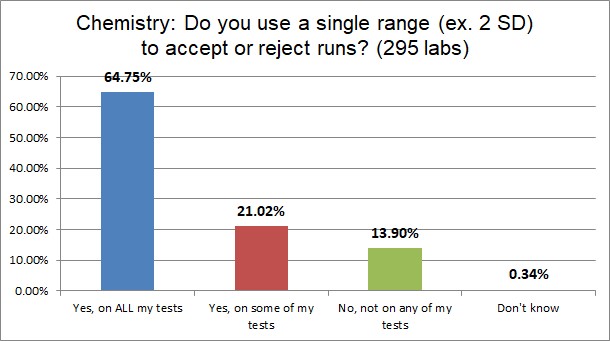
Two-thirds of labs are still reporting the use of single ranges on all of their tests. The tradition of using 2 sd control limits was born in chemistry testing nearly half a century ago, so maybe it's not so surprising that the practice endures.
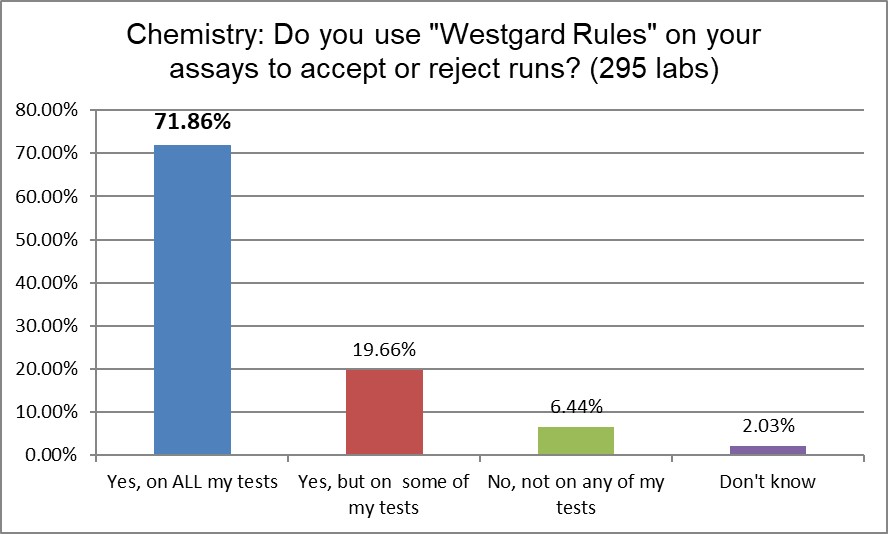
More than 90% of the chemistry sections use "Westgard Rules" on some or all of their tests. Globally, very very few chemistry tests go without Westgard Rules.
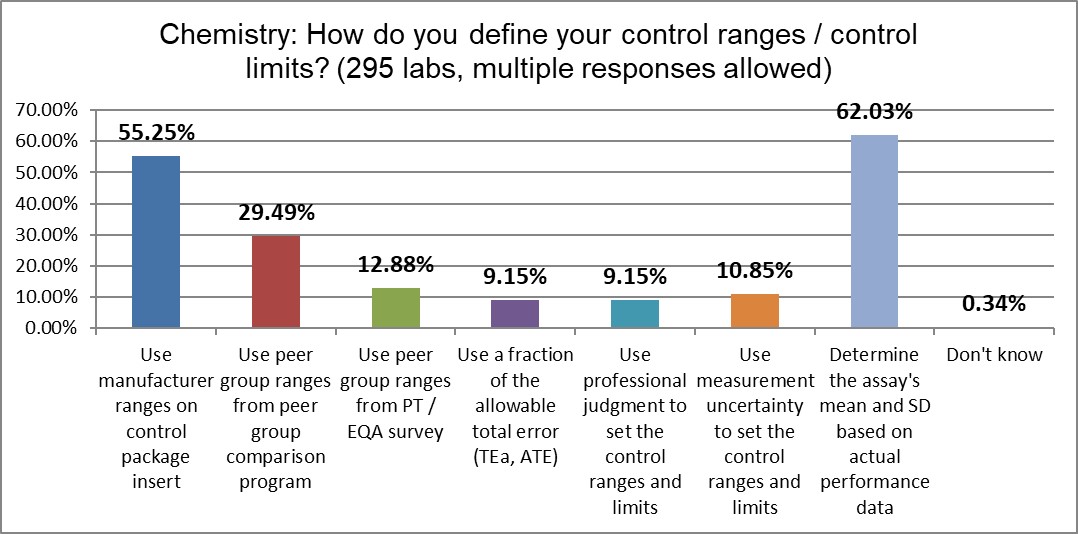
Almost two-thirds of laboratories establish their own mean and SD. Over half are also using manufacturer ranges. Only about 10% of labs are using measurement uncertainty to set their ranges. One of the least-used approaches is their own professional judgment.
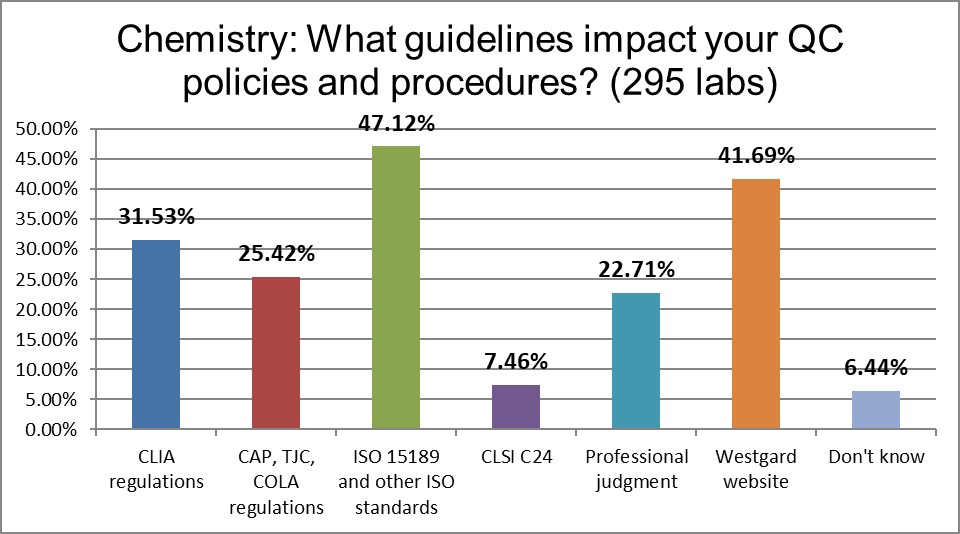
ISO 15189 maintains its global dominance as the most influential standard for setting up chemistry control charts.
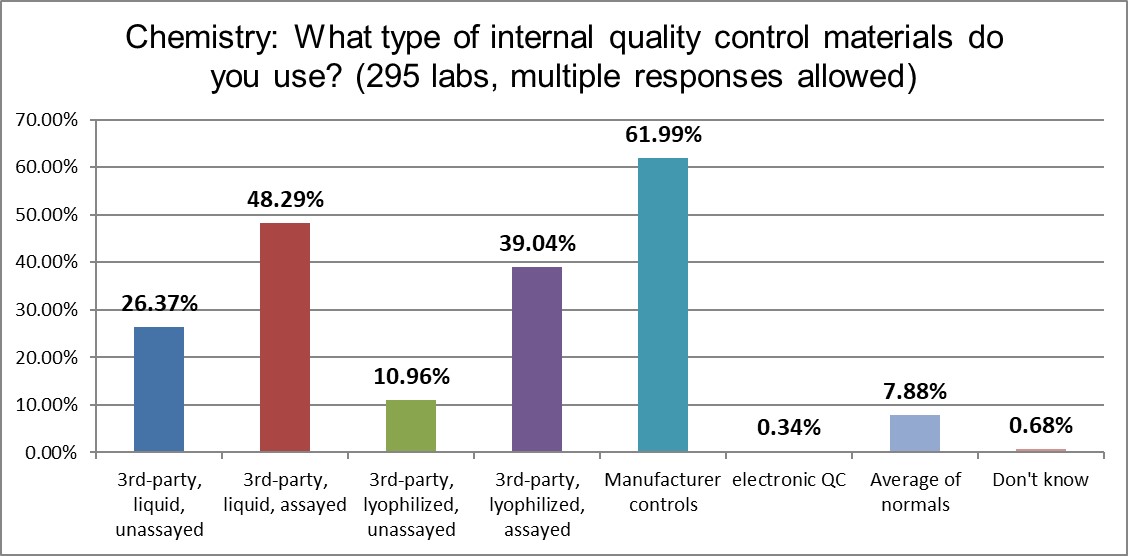
The use of manufacturer controls are very high. Assayed controls are the 2nd and 3rd most popular types.
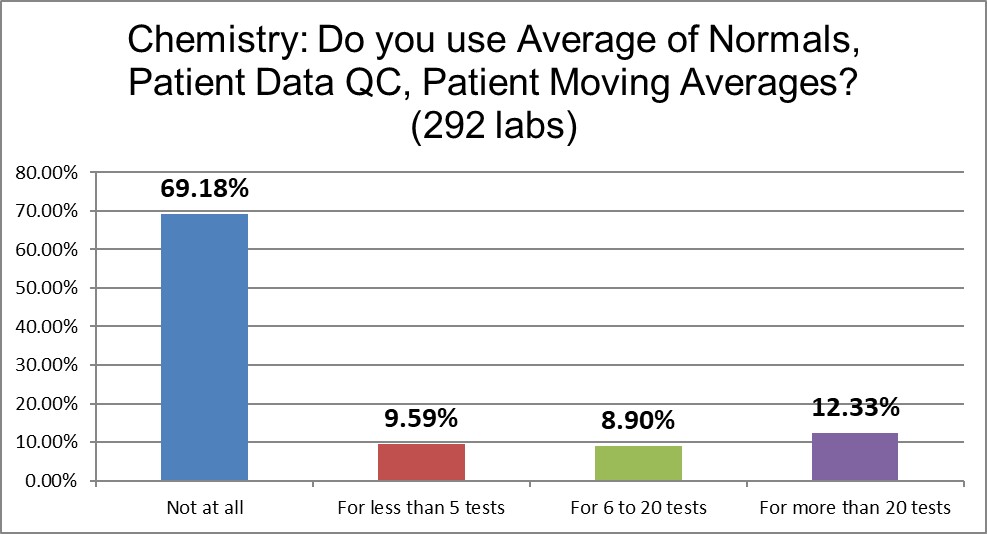
Nearly 70% of chemistry sections are not using any patient data techniques (commonly called PBRTQC these days).
The Real Practice of Running Controls
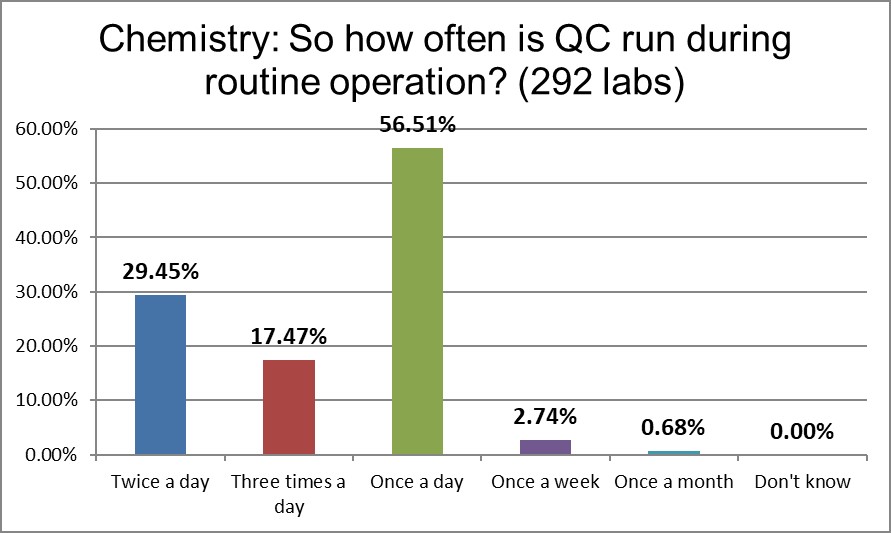
Once-a-day QC is the practice of a majority of chemistry sections. Running twice a day is common for almost 30% of laboratories.
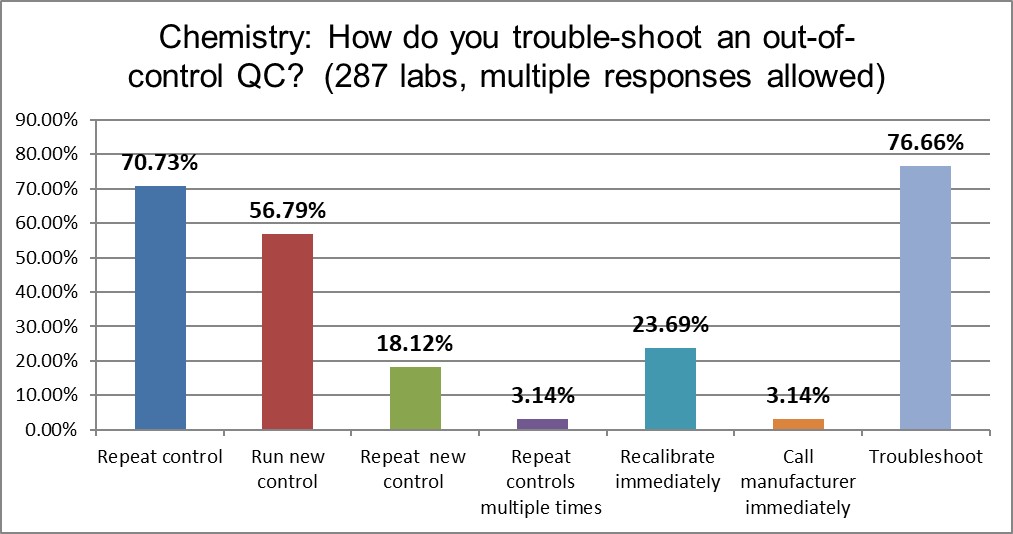
The good news for chemistry sections, 3 out of 4 try to troubleshoot first, repeat second. However, only a slightly smaller percentage also admit to repeats. A majority run a new control after the first repeat. That a quarter of laboratories will consider recalibrating as a first responses is a boon to the makers of calibration kits, but might not be an efficient practice for the world.
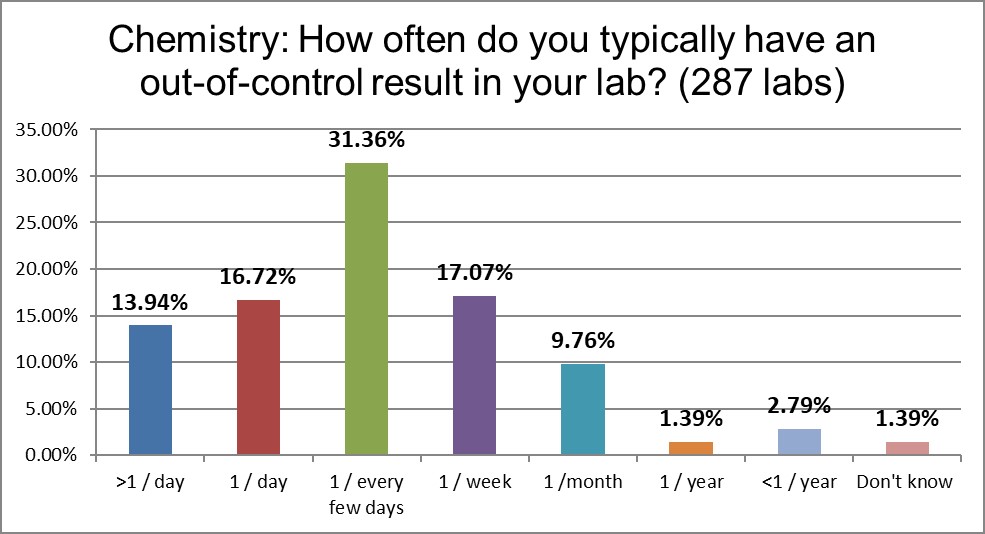
78% of chemistry sections see errors every week, every day, or even more often. Chemistry seems to be very error prone.
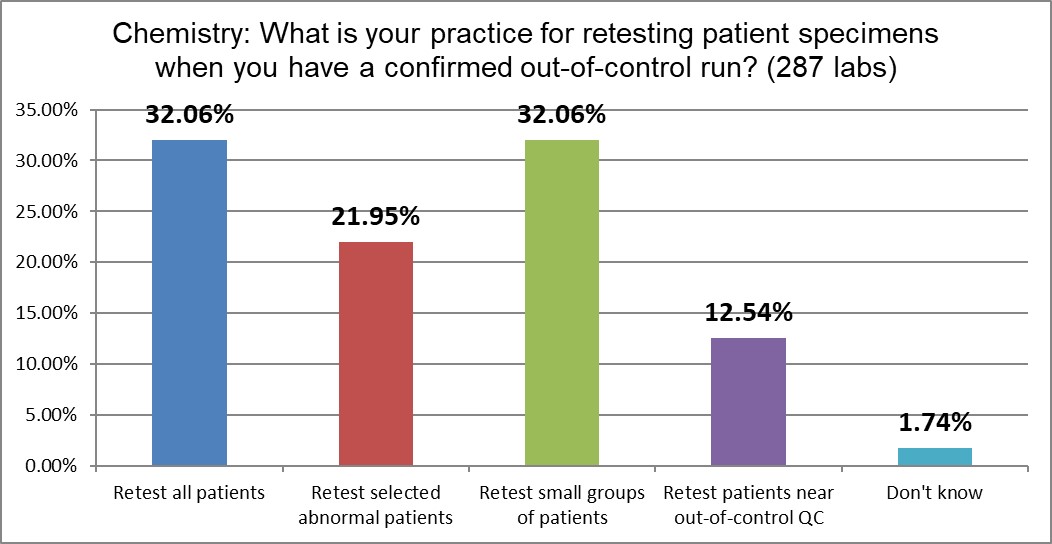
Retesting all patients, while the theoretical response to an out-of-control situation, is only practiced by a third of chemistry sections. Equally practiced is the policy of testing small groups of patients near the rejection time, proceeding backwards until the error is found.
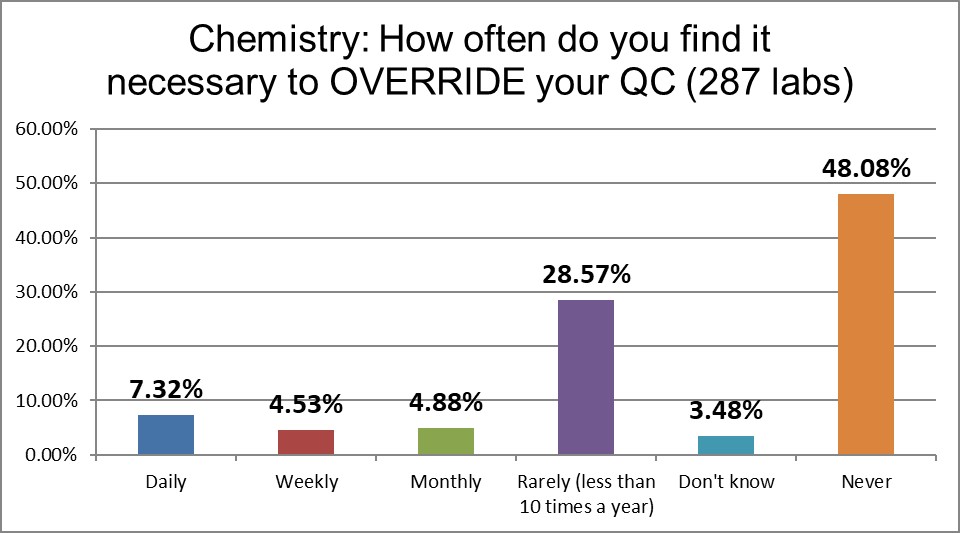
Almost 1 in 8 chemistry sections has to regularly (daily or weekly) override their QC results to release patient results.
The Final Overview
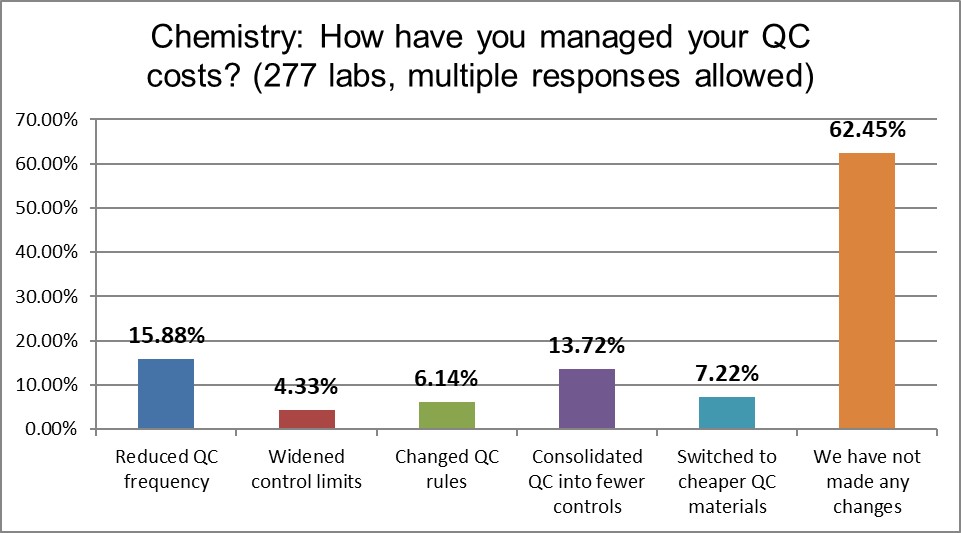
A majority of chemistry sections have taken no actions to change their QC practices or manage their costs. The most popular actions, for those who took some action, was to reduce QC frequency or consolidate to fewer controls.
